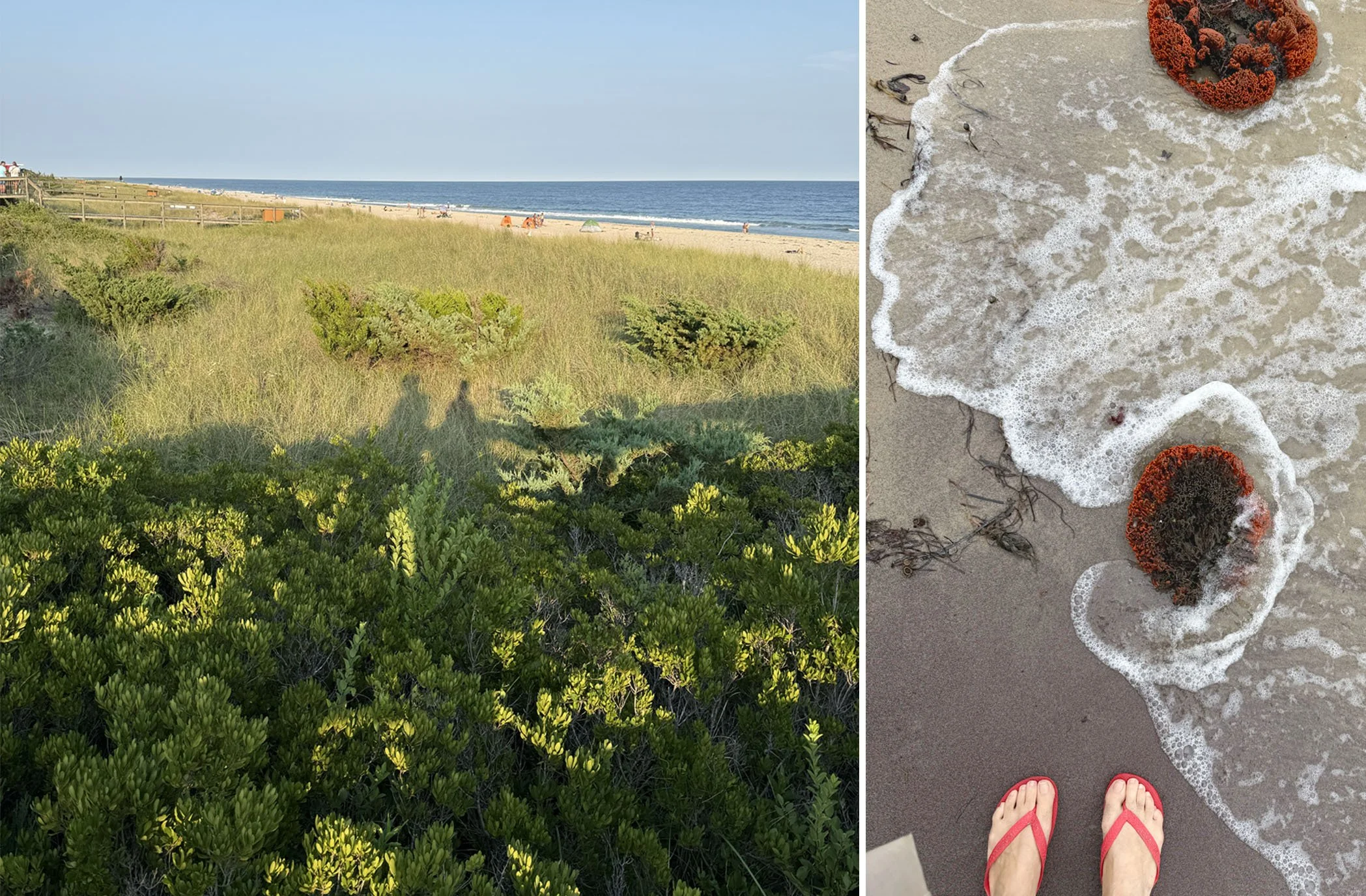How Fire Island Taught Me to Love the Atlantic
Last week I had the pleasure of spending a few days on Fire Island — the long, skinny barrier island that lies a 25 minute ferry ride from Long Island and feels a world away from Gotham City and its sprawling suburbs. I had been wanting to visit this fabled strip of sand, which is car-free and has been known as a refuge for the gay community since the 1950s, so when an artist friend got an invitation to the Fire Island Artist Residency benefit, I had to go along for the ride.
As a born-and-raised Californian, I share Melville’s reverence for the “mighty Pacific Ocean” -- greatest of all the seas. Living in New York, I have been challenged to feel the romance of the Atlantic’s low-slung, grassy shores. As a kid growing up in the Sacramento Valley, a trip to the beach spelled adventure -- a hike to a windy picnic at Limmentour or 10 Mile beach in Point Reyes, where intended wading inevitably ended in getting tousled by the surf (often in one’s clothes) because it was too much fun to dodge the waves without getting immersed. Other times, it meant rowing the dory my dad made across Tomales Bay or off my grandparent’s rocky Point Richmond cove out to Red Rock to explore.
But on Fire Island, I learned to appreciate the subtlety of this classic Atlantic shore landscape: lavender sunsets over gentler waves; infinitely swimmable summer waters; modern houses tastefully nestled in piney dunes. While a Pacific Coast cliff can dwarf a Malibu mansion, I have often seen Atlantic shorelines overtaken by architecture. But in Cherry Grove, where I stayed, houses were mostly set behind the dunes, with boardwalks and decks winding among the maritime pine forest. Though relatively dense, the absence of cars and the fact that all foot traffic is confined to boardwalk “streets”, means that dune plant communities remain intact, making the whole place feel like a tree house village out of a Miyazaki film.
Notwithstanding the beaches, drag shows, costume raves and occasional fetish gear seen on the boardwalks, Cherry Grove also reminded me of Village Homes, a passive solar neighborhood in Davis, CA, where I spent much of my childhood. Though Village Homes is accessible by car, all houses in the neighborhood front on foot and bike-only paths which become the main thoroughfares for trips within the enclave. Front yards in Village Homes don’t have fences and lawns are saved for a handful of common parks with big, open playing fields. Built in the 1970’s to be passive or super-energy efficient, Village Homes’ houses were contemporary to their time and set amongst trees, orchards and gardens featuring native hedgerow plants.
While Village Homes is hippy-granola to bohemian-nerdy and Cherry Grove is a haven for queer NYC creatives, both places were created with the intention of living in right-relationship with the place and with people. The Cherry Grove and Pines communities of Fire Island were developed as (and continue to be) a refuge from persecution, discrimination and the devastation of the AIDs pandemic. They are also places of massive cultural and economic influence - frequented by celebrities with houses renting for tens of thousands of dollars per week.
Though we will probably never see Madonna strolling the common areas of Village Homes, it is also a place that was ahead of its time, and has become a coveted and affluent enclave even within an affluent university town. Many aspects of Village Homes predicted New Urbanist design. Passively-oriented neighborhood planning and architecture are still considered cutting-edge, and it is only in the past few years that mainstream Californians started replacing their lawns with drought-tolerant perennials.
In distinct ways, Cherry Grove and Village Homes are examples of what is possible when designers and developers choose to release nostalgia and create places that fit a new paradigm, whether it be sexual-relational freedom or a freedom from private yards and fossil fuels. In both cases, the result is an unmistakable identity of place that makes the unique conditions of these spots on the globe, seen, heard and felt, and draws people from around the globe to soak in the experience of being there.

